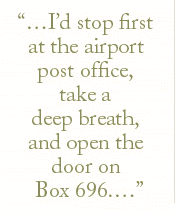  |


Even if the corporate pilots wanted to do transition or proficiency training, they pretty much had to handle it on their own because no training organization existed to serve them. I thought about that a good long while and figured that there might be an opportunity in giving those guys a training system similar to what the airlines had.I told Mr. Trippe about my idea, and he was quite supportive. He said he thought it would be good for aviation and a good business move for me. That certainly got me going. But later, when I outlined my plan to Mr. Baruch, he shook his head and said, "You'd better be careful. You've got a good job at Pan Am, and you might lose everything." Now, Bernard Baruch's advice on business and finance was highly valued by no less than several Presidents of the United States (maybe that's why the government's record in business matters is so bleak), so I weighed his words carefully, and then I listened to Mr. Trippe.
In 1951 I took a $15,000 mortgage on my house and opened the doors to FlightSafety. The company consisted of one 200-square-foot room on the third floor of LaGuardia Airport's Marine Air Terminal, just across from Pan Am's operations building and the hangar that housed Mr. Trippe's airplane. Inside was a wooden desk, a telephone, and an electric typewriter upon which a secretary - FlightSafety's only full-time, paid employee - typed my endless stream of letters soliciting business.
Flight Safety International, Inc.
All rights reserved



